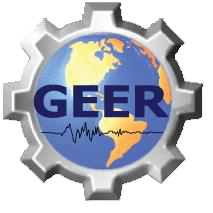Geotechnical Extreme Events Reconnaissance (GEER) Association Responds to Central Italy Earthquake to Document its Impacts
 A team from the Geotechnical Extreme Events Reconnaissance (GEER) Association, supported by the National Science Foundation, has been mobilized to investigate geotechnical and geological aspects of the destructive earthquake sequence that occurred in Central Italy during August 24-29, 2016. They will operate in close collaboration with Italian engineers and scientists, some of whom have already deployed to the affected region and are collecting perishable data. The research is also supported by the B. John Garrick Institute for the Risk Sciences at UCLA.
A team from the Geotechnical Extreme Events Reconnaissance (GEER) Association, supported by the National Science Foundation, has been mobilized to investigate geotechnical and geological aspects of the destructive earthquake sequence that occurred in Central Italy during August 24-29, 2016. They will operate in close collaboration with Italian engineers and scientists, some of whom have already deployed to the affected region and are collecting perishable data. The research is also supported by the B. John Garrick Institute for the Risk Sciences at UCLA.
Prof. Jonathan P. Stewart, Professor and Chair of the Department of Civil and Environmental Engineering at UCLA, is the GEER team leader on the U.S. side. The US-based GEER team members participating in the investigation are Prof. Shideh Dashti (University of Colorado Boulder), Prof. Kevin Franke (Brigham Young University), Dr. Robert E. Kayen (US Geological Survey), and Dr. Paolo Zimmaro (UCLA). The GEER team is part of an international coordinated effort that involves cognizant Italian agencies (i.e. National Institute of Geophysics and Vulcanology, INGV; Seismic Microzonation Center, CentroMS; and European Centre for Training and Research in Earthquake Engineering, EUCENTRE Foundation). Key Italian participants include: Prof. Paolo Bazzurro (EUCENTRE and University Institute for Superior Studies, IUSS Pavia), Prof. Sebastiano Foti (Politecnico di Torino), Dr. Fabrizio Galadini (INGV), Prof. Giuseppe Lanzo (Sapienza University of Rome), Prof. Alessandro Pagliaroli (University of Chieti-Pescara), Dr. Giuseppe Scasserra and Prof. Filippo Santucci de Magistris (University of Molise), and Prof. Francesco Silvestri (University of Napoli Federico II).
Based on information gathered to date, field investigations for the GEER team and collaborators are likely to include: (1) documentation and mapping of surface rupture, rockfalls, and extent of other ground failures, (2) visiting accelerograph sites in near-fault region to look for any potentially unusual conditions, (3) evaluation of infrastructure performance in the vicinity of accelerograph stations (likely in coordination with collaborating structural engineers), (4) evaluation of structural damage patterns using both aerial image analysis and ground observation, which may provide evidence of local ground motion amplification effects (site response), (5) evaluation of foundation performance in villages within the strongly shaken region, and (6) inspection of dams and gathering of information on instrumentation that may have recorded their seismic response.
Earthquake engineering is an experience-driven field in which perishable data that can be used to advance our understanding should be systematically collected immediately following the event. The data collection will be performed using traditional and advanced geotechnical engineering tools. Multidisciplinary approaches will be also used to better characterize deformation patterns and earthquake-induced displacements.
After the field investigation is complete, observations and findings will be posted on the GEER website: http://www.geerassociation.org/.
GEER Contact: Prof. Jonathan P. Stewart, Ph.D., P.E., University of California Los Angeles, (310) 206-2990, jstewart@seas.ucla.edu
Image: Earthquake destruction in central Italy. Associated Press.
